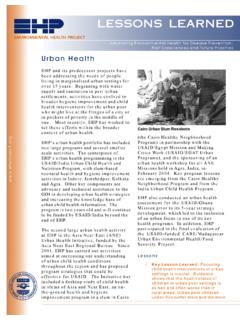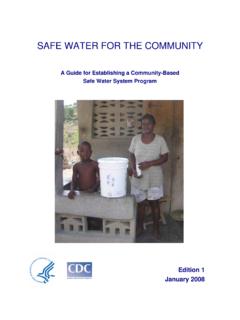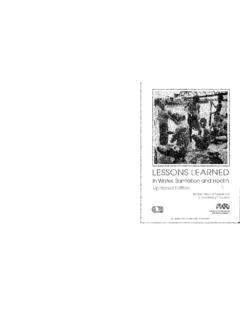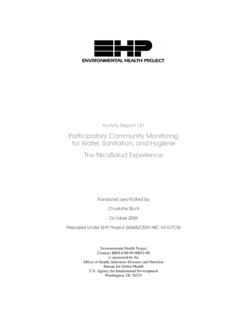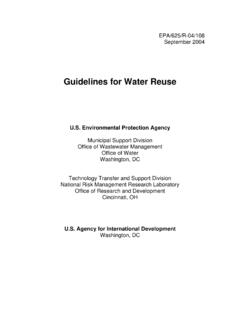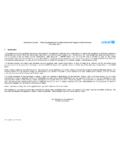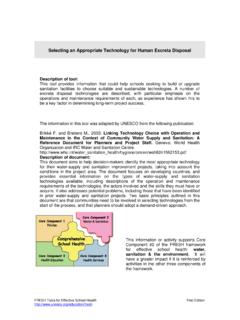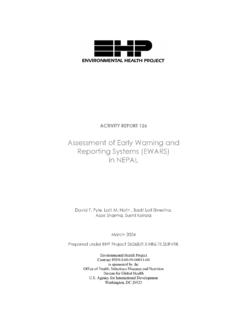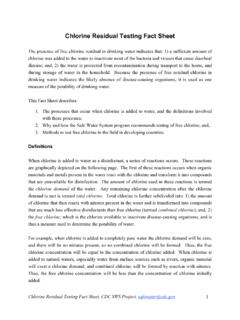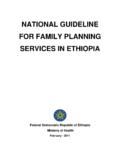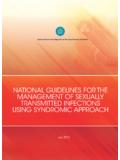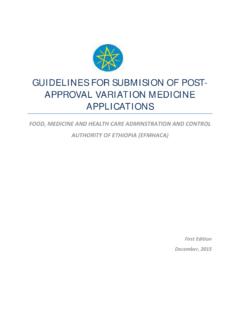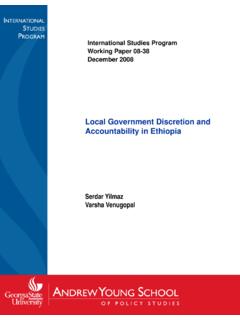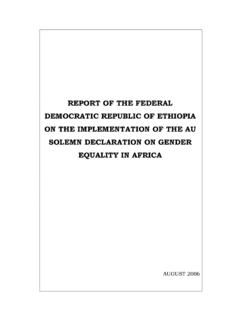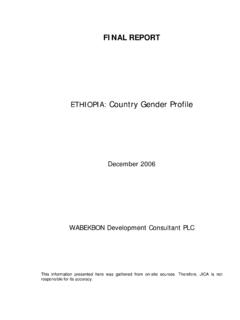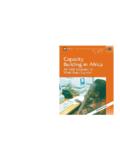Transcription of USAID Sanitation Consultation Synthesis Report
1 USAID Sanitation Consultation Synthesis Report 1 USAID Sanitation Consultation Synthesis Report I. Executive Summary In response to a heightened worldwide focus on the critical needs of billion people lacking access to adequate Sanitation , the Agency for International Development ( USAID ) is reviewing its current Sanitation programming and laying the groundwork to optimize its contribution to the Millennium Development Goal Sanitation target. As an initial step, USAID convened a 1 day Sanitation Consultation workshop, held June 19 and 20, 2008, in Washington, DC.
2 , which brought together 35 participants including USAID staff from across the Agency and eight internationally recognized Sanitation experts from outside of USAID . Through panel presentations, plenary discussions, and small working-group activities, participants in the Sanitation Consultation came together to share and analyze information on international and USAID actions in Sanitation , identify programming gaps and USAID comparative advantages, prioritize programming options and develop next steps to incorporate these priorities into USAID programs.
3 Two expert panels presented information on USAID programming and the status of international Sanitation programming. These presentations informed the plenary discussions and working groups, which identified six priority program areas as an outcome for this Consultation . The six program areas below are recommendations that would build upon USAID comparative advantages in programming, a broad geographic presence and global networks: 1. Sanitation marketing, which includes demand activities like total Sanitation approaches, supply chain management, and access to Sanitation products and services.
4 2. Private sector financing for Sanitation , incorporating business interests that can benefit from viable Sanitation markets and private financial service organizations that can move capital toward Sanitation improvements. 3. Operationalizing national Sanitation policies and strategies by engaging stakeholders in country-specific action plans and operationalizing strategies at all levels. 4. Sanitation for the urban poor through state-of-the-art programs that might include Sanitation marketing and private sector participation, reform, and revitalization of utilities.
5 5. Sanitation for PLWHA households, including expanding current activities by working with the Office of the Global AIDS Coordinator to develop concrete guidance for missions on feces management and Sanitation , safe water treatment and hygiene promotion in households of people living with HIV and AIDS (PLWHA). 6. Capacity-building, a core activity in all USAID programs, targeting USAID staff and stakeholder groups, including health extension workers, NGO field staff, and Ministry and municipal staff. To move the Sanitation agenda forward and channel these areas of competitive advantage in the Sanitation sector agency-wide, USAID s Bureau of Global Health will form a Sanitation Working Group to help create a vision for USAID Sanitation programming; develop strategic Sanitation activities; produce USAID Mission guidance/guidelines, programming tools, and staff training etc.
6 ; and foster the sharing of Sanitation programming and experience within USAID and externally. USAID Sanitation Consultation Synthesis Report 2II. Introduction USAID convened a Sanitation Consultation in June 2008, to strengthen the Agency s role in Sanitation and develop a common vision on community and household approaches to Sanitation , while ensuring that its investments are strategic and complement efforts by USAID and others in this sector. The Sanitation Consultation had three objectives: Identify USAID s comparative advantages and opportunities in community and household Sanitation programming for improved health; Describe specific program approaches that USAID should take to increase access to and use of basic Sanitation over the next five years; and Agree on next steps that will help USAID incorporate best Sanitation practices into ongoing or new programs.
7 This Report synthesizes the results of the Sanitation Consultation and is intended for participants as well as a broader audience of USAID staff and external Sanitation practitioners interested in USAID s ongoing work to incorporate the best Sanitation practices into its programs. After a brief background discussion, the Report follows the workshop agenda and captures key points from the various sessions. III. Background The year 2008 is a watershed year for the Sanitation sector. The UN declared 2008 to be the International Year of Sanitation ; the Lancet has published no less than three high-profile editorials lauding the cost effective impact of Sanitation programs in improving human health and economic development; international donors are investing in a Global Sanitation Fund to help meet the MDG Sanitation target; thirty-two African ministers have pledged to spend percent of their GDPs on Sanitation and hygiene; and water and Sanitation appeared on the G8 summit agenda in July 2008.
8 Within USAID , the 2005 Senator Paul Simon Water for the Poor Act has resulted in a $300 million water earmark that in 2008 is driving a programmatic response in water and Sanitation from USAID Missions and an associated demand for programming guidance. USAID s Bureau for Global Health (GH) is responding to this demand with additional funding to support Sanitation and hygiene programming. In response to these external and internal demands for a more strategic USAID approach to Sanitation and building on over two decades of solid, health-focused Sanitation and hygiene programming, USAID /GH conceived the idea of the Sanitation Consultation as a means to increase and organize the Agency s attention to Sanitation .
9 A background paper entitled Moving Toward a Strategic Approach to Sanitation at USAID (available at ) was developed to provide a succinct analysis of the current Sanitation landscape, including USAID s current strengths, and challenges and options for building and implementing an Agency approach to Sanitation . IV. Setting the Stage The Consultation opened with two panel presentations: the first highlighted ongoing USAID Sanitation work and the second reviewed the global state of the Sanitation sector from the perspective of internationally recognized experts.
10 USAID Sanitation Consultation Synthesis Report 3 The panel on Sanitation Programming at USAID : Examples from the Field, moderated by John Borrazzo, chief of USAID s Maternal and Child Health Division/GH, provided snapshots of USAID Sanitation activities incorporating the best of current practices in the sector. USAID project contractors Lisa Lumbao and Foort Bustran discussed respectively the work of the Environmental Cooperation-Asia (ECO-Asia) in urban Sanitation with the Philippine Sanitation Alliance and the Environmental Services Project (ESP) in Indonesia.
